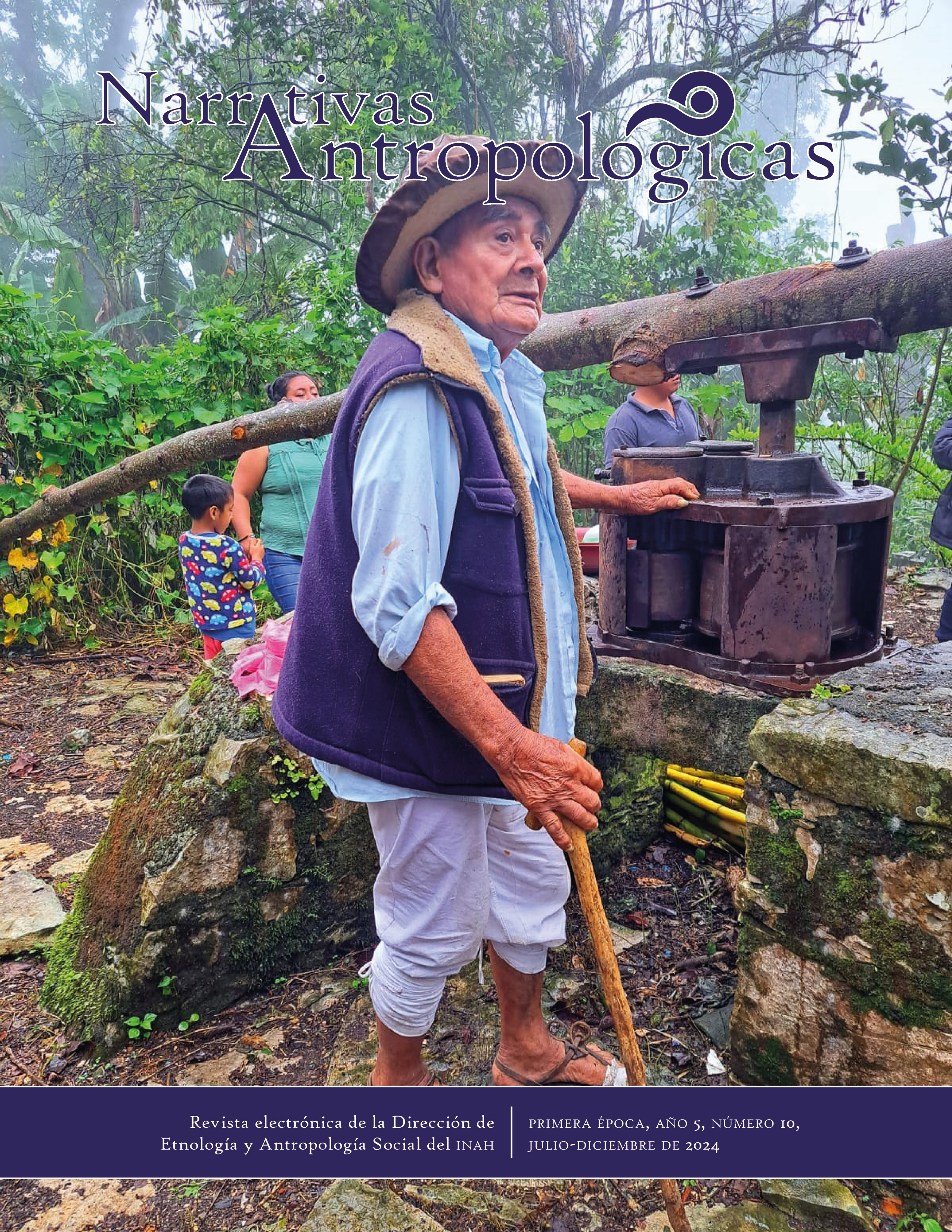The Guadalupita Ácrata in Ojo de Agua: Invisible anarchism of everyday life in the territory
Published 2024-06-25
Keywords
- anarchism, baroque ethos, gore capitalism, ludic work and politics of the imagination.

This work is licensed under a Creative Commons Attribution-NonCommercial-ShareAlike 4.0 International License.
How to Cite
Abstract
This document participates in anarchist studies with the objective of tracing survival strategies and spontaneous life methods from the ethnographic application of the baroque ethos concept of Bolívar Echeverría, as a practice in the territory of transcolonial emancipation from the living conditions of capitalism. gore, described by Sayak Valencia. For the proposed objective, we participated in the artisan process of the Guadalupita Ácrata sign in the Ojo de Agua neighborhood, with the activation of 1) the practice of "paro" for the exercise of a playful work of free association; 2) the politics of the imagination for the improvisation of processes of subjectivation based on self-valorization; 3) a street scene of territorial life for free expression and direct action; and 5) the production of images as signs-vehicles of social mobilization, territorial action and participation in the politics of life. These processes lead to the recognition of the use value of elusive images of the social contracture, mercantile and statist.
Downloads
References
- Aguirre Rojas, Carlos Antonio, Antimanual del buen rebelde. Guía de la contrapolítica para subalternos anticapitalistas y anstisistémicos (Colombia: Ediciones desde Abajo, 2013), 10.
- Amador, Abel, y Verónica Marín, Ojo de Agua documental, video (17:27), (México: Cinecdoque), acceso el 24 de junio del 2023 en https://www.youtube.com/watch?v=XOI37QVoToc.
- Echeverría, Bolívar, “Meditaciones sobre el barroquismo”, en Modernidad y blanquitud (México: Era, 2016), 183-207.
- Fanón, Frantz, Los condenados de la tierra (México: FCE, 1973), 151.
- Ferro Vidal, Luis Enrique, “Ai’ se ven: imagen y guadalupanismo otomí y chichimeca jonaz”, Cuicuilco, núm. 45 (2009), 249-264, 250.
- Graeber, David, Fragmentos de antropología anarquista (México: Ediciones La Social, 2015).
- Grindon, Gavin, “Carnaval contra capital: una comparación entre Bakhtin, Vaneigem y Bey”, en Anarquismo y antropología, coord. por B.
- Roca (s.?l.: La Malatesta, 2008), 111.
- Gruzinski, Serge, La guerra de las imágenes. De Cristóbal Colón a “Blade Runner”, (México: FCE, 1994).
- Ibáñez, Tomás, Anarquismo es movimiento. Anarquismo, neoanarquismo y postanarquismo (Barcelona: Virus Editorial, 2015), 118.
- Medina, Abel Al Jende, “Posibles aportaciones al anarquismo desde una práctica antropológica no profesional en las redes sociales locales”, en Anarquismo y antropología, coord. por B. Roca (s.?l.: La Malatesta, 2008), 33.
- Morris, Brian, “Antropología y anarquismo: afinidades electivas”, en Anarquismo y antropología, coord. por B. Roca (s.?l.: La Malatesta, 2008), 28.
- Quijano, Aníbal, “Colonialidad y modernidad/racionalidad, Perú Indígena, vol. 13, núm. 29 (1992), 11-20.
- Roca Martínez, Beltrán, “Anarquismo y antropología: una introducción”, en Anarquismo y antropología: Relaciones e influencias mutuas entre la Antropología Social y el pensamiento libertario (s.?l.: s.?e., 2008), 8, acceso el 6 de junio del 2023 en https://anarkobiblioteka3.files.wordpress.com/2016/08/anarquismo_y_antropologc3ada_-_varios.pdf
- Sarduy, Severo, Obras III. Ensayos (México: FCE, 2013), 172.
- Valencia, Sayak, Capitalismo gore, control económico, violencia y narcopoder (México: Booket, 2016).


